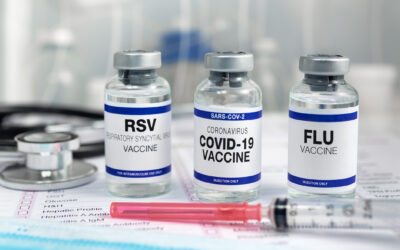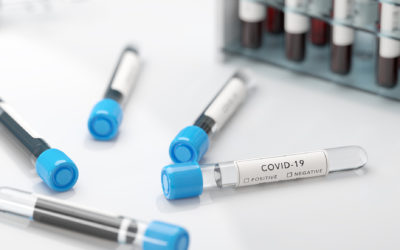The 2019-nCoV virus — better known as the Wuhan coronavirus, was first detected in the city of Wuhan in China. As of this writing, globally there have been over 73,000 people infected and almost 2,000 people killed by the virus. The Wuhan coronavirus is spreading quickly and has left many people extremely concerned about contracting the virus themselves.
In the likelihood of a patient visiting your pharmacy and asking you or your staff questions about the coronavirus, we have compiled a list of 5 things that your patients should know about the virus.
1. The chances of contracting the virus is very low
The epicenter of the virus is in Wuhan, China, making it very unlikely that the average person living in the U.S. will even come in contact with the coronavirus. The 19 viral cases found in the United States have been identified in people who have either traveled from China in the last few weeks or have had direct contact with someone who has.
The 19 cases are being heavily quarantined and contained, with the U.S. Department of Health and Human Services taking preventative measures to ensure that further spread of the virus does not continue. Anyone entering the U.S. from China is being placed in quarantine for 14 days, regardless of having symptoms or not. Anyone who does show symptoms of the 2019-nCoV are also being isolated and quarantined. The chances of coming in contact with anyone that is infected with the Wuhan coronavirus at this point is extremely low, making the possibility of contracting the virus even lower.
2. The fatality rate is also very low
The global death toll is confirmed at almost 2,000 people with a majority of those deaths primarily being reported from China. The number of known viral cases is hovering around 73,000 currently, which puts the fatality rate at roughly 3%. This is lower than the annual flu virus, which has killed 10,000 people and hospitalized over 180,000 in just the United States this season alone.
3. Symptoms typically show up after 14 days
The 2019-nCoV virus has a long incubation period, with symptoms sometimes taking as long as 14 days to appear; but this can vary largely from patient to patient.
These symptoms can include fever, coughing, and extreme shortness of breath.
You should let your patients know that if they or someone they’re close to has recently traveled from China and starts to exhibit these symptoms, they should seek appropriate medical attention immediately.
4. Take the proper precautions
Just like any virus or other illness, it is necessary to take the proper precautions. Your patients should understand that frequently washing their hands and using hand sanitizer after using the restroom and before eating is always a good way to help prevent getting sick. It’s also important for your patients to avoid touching their faces as much as possible, as that is the easiest way for any potential germs to enter their system.
They should also try to avoid contact with anyone that appears to be sick and if possible, and try to limit the amount of time spent around those who have visited China within the last few weeks, as the Wuhan coronavirus is easily spread from person-to-person.
5. They should go to the hospital if they truly think they have the Wuhan Coronavirus
If your patients have recently traveled from China and start to show symptoms similar to the symptoms previously listed in this article, it’s important for them to take the proper precautions by visiting their doctor. In the off-chance that they do have the Wuhan coronavirus, they should avoid extended human contact if possible and be sure to let their doctor know about the people they have been in contact with. This can help avoid any potential spread of the virus and keep it contained.
Even with the global spread of the virus, the U.S Department of Health has been successful in keeping the virus contained and those living in the United States have a significantly lower chance of contracting the 2019-nCoV virus because of it. However, it’s always important for your patients to understand to take the proper precautions and to be aware of the situation at large.


